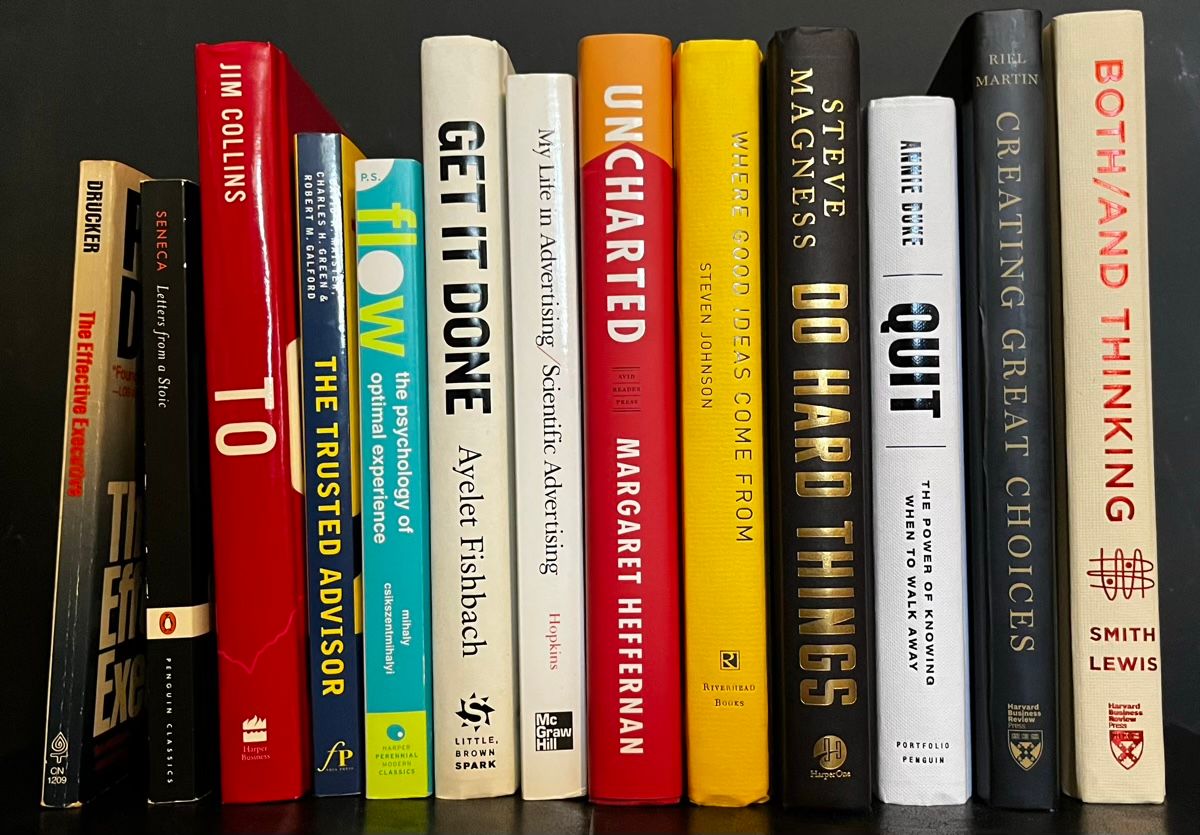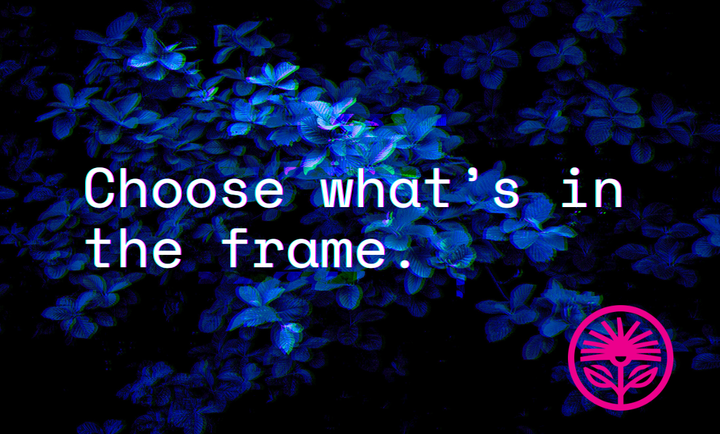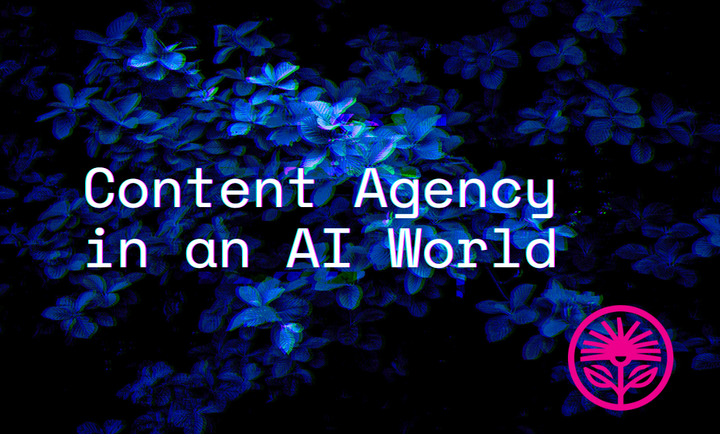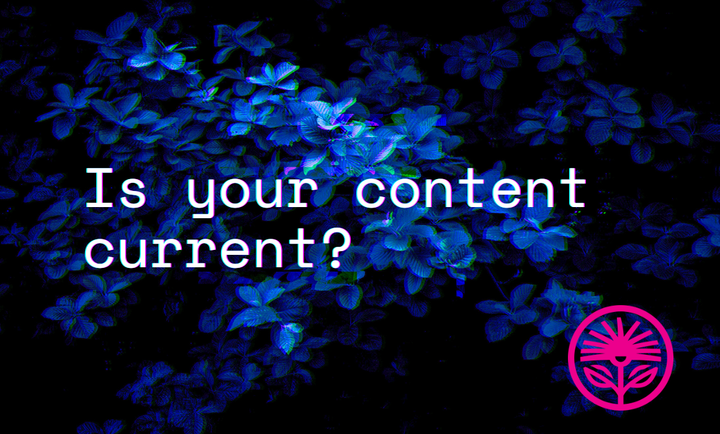Commentary: Success fades into view
How to act quickly, for as long as it takes.

“They fade into view.”
Over the past few weeks, this newsletter has been focused on long-term pacing to achieve big things.
But, sometimes, you need to move quickly. You’ve got a deadline or a fast-moving opportunity.
And in those cases, isn’t going slowly dangerous? It certainly can feel that way!
Well, the purpose of pace, I’m learning, isn’t about going slowly. It’s about going sustainably.
The point isn’t to take a long time, it’s to take enough time.
It’s not about delaying effort, it’s about prolonging it. By avoiding the panicked actions or “undecisions” that derail us.
As the ancient philosopher Seneca put it, “No fear is so ruinous and so uncontrollable as panic fear. For other fears are groundless, but this fear is witless.”
Pace is about keeping our wits and making good, long-term decisions. As I’ve written about before, the gusto of “decisiveness” is often hiding the cowardice of indecision.
As The Effective Executive author Peter Drucker once told Jim Collins, writer of Good to Great, “Don’t make a hundred decisions when one will do.”
By slowing down, we can make one good decision in place of a hundred panicked actions.
But we do, still, have to act.
The dark side of pace is fear of complacency. Our mind tells us: “Of course you want to go slowly, you’re resting on your laurels.” Or, sometimes more sinisterly, “Of course you want to go slowly, you’re lazy.”
Those voices don’t necessarily go away—that’s all those particular voices have to say—but we can confidently acknowledge and address them by acting sustainably.
As consulting legend David Maister wrote, “You get no benefit from announcing anything. You get the benefit of that which you actually do.”
But he doesn’t end there. This isn’t about acting for its own sake. “All I’m trying to say is (and I hope this is clear) that this is what a strategy is for. It’s something we all agree to do and are prepared to be held accountable for.”
This is what strategy is for. To create a standard for accountable actions.
But that standard—that structure—needs to consider the people it’s there to support—like you. A standard that’s impossible to achieve is demotivating, not inspiring.
But a standard that’s challenging but achievable—one that stretches us a little beyond our previous limits—well, that’s the literal definition of a flow state.
As Mihaly Csikszentmihalyi wrote in Flow, “The best moments usually occur when a person’s body or mind is stretched to its limits in a voluntary effort to accomplish something difficult and worthwhile. Optimal experience is thus something that we make happen.”
A steady pace isn’t setting a low bar for ourselves, it’s setting us up for optimal experience.
And the science of performance and motivation back this up. As Ayelet Fishbach wrote in Get it Done, “If you want to predict how much a person—including yourself—will stick to a resolution, ask how excited they are to engage in it rather than how important the resolution seems to be.”
This has profound implications for our work: “If you can find a way to make the path to your goal enjoyable or exciting,” Fishbach continues, “you’ll be intrinsically motivated, which means you’ll stick to it longer.”
This is especially crucial for advertising and marketing.
Because there are no definites, no guarantees when you’re interacting with the public.
Claude C. Hopkins, the most prolific and influential advertising copywriter of the early 20th century wrote, “What is the lesson? It is that none of us can afford to rely on judgement or experience. We must feel our way. New problems require new experience. We must test our undertakings in the most exact way possible. Learn our mistakes and correct them. Watch every appealing lead.”
If we’re promoting something, the most important thing we can do is observe, respond, and improve. And that takes time. It takes patience.
It takes pace.
Almost a century after Hopkins wrote the above, Margaret Heffernan would write in Uncharted, “All creative thinking about the future starts with experiments, feeling our way through a changing landscape, finding boundaries and contours. ... More experiments reveal opportunity, advantages. All of this work shows us where we are, but still requires resilience because the route itself is uneven.”
Any time we’re dealing with the future, we’re working in a zone of uncertainty. Which means we need time to create experience, to find patterns, and to analyze results.
The breakthrough we’re hoping for—the big tipping point that makes it all worthwhile—is a real thing. But it takes time to reveal itself to us.
As Steven Johnson wrote in Where Good Ideas Come From, “This is how slow hunches often mature: by stealth, in small steps.
“They fade into view.”
“Quitting the Rest”
“But Joel,” I hear myself saying, “didn’t you just say that sometimes you have to move fast? Didn’t you say that sometimes you need to seize an opportunity quickly?”
And that’s the paradox.
Slowness is preferred, but speed seems required.
Does that sound like your situation, sometimes?
Luckily, Steve Magness, the high-performance running coach, has us covered in Do Hard Things: “The best performers tend to have a flexible and adaptive coping ability. They can bounce between different strategies, depending on the demands of the situation.
…
They all work—and don't.”
It’s not either/or, it’s both/and. It’s not yes or no, it’s yes and no. Depending on the circumstance, the situation, and the need.
So how do we go quickly when we know we need to go slowly? Annie Duke, in Quit, reminds us: “Success does not lie in sticking to things. It lies in picking the right thing to stick to and quitting the rest.”
First, we quit the things that aren’t helping. Like the nice-to-haves we do not need and the endless perfectionist polishing we don’t have time for.
Next, we look for a “Hidden Gem,” in the words of Jennifer Riel and Roger Martin in Creating Great Choices, or a “Mule” in the words of Wendy K. Smith and Marianne W. Lewis in Both/And Thinking.
In essence, it’s taking the good parts of one side of the paradox and the good parts of the other side of a paradox, mitigating or removing the negative parts, and recombining what remains into a new direction, action, or decision.
And we reframe our central question as a combination instead of a contradiction.
Not “How do I go fast when I want to go slow?” but “How do I go fast at a pace I can sustain?”
So based on all of this, here are some ways I try to resolve this particular paradox when I need to do some sort of marketing activity quickly, while maintaining a steady pace:
1) I lean into my endless energy: I can write forever. My greatest strength (and greatest weakness) in life is that I’m never at a loss for words. So when things move fast, I tend to focus my efforts where I have unlimited energy. What do you have endless energy for?
2) I prioritize demand: Instead of banging my head against the wall trying to change minds in a short period of time, I seek out people who already want what I have to offer. Who already wants what you’re selling?
3) I try to understand the required supply: To find and satisfy that demand, I try to lean into what people want to see, hear, or experience, and at the appropriate cadence. I usually need to do a lot of experimenting in a short period of time to find the right fit—so I increase and vary the supply based on that endless energy source to better understand the demand. What does your audience need to receive to have their demands met?
4) I reinforce efforts: Everything I write and create during these faster times is in some way meant serve multiple goals at the same time. Promotional content for one thing helps build a mental model for another. Frameworks for one project become useful tools for another. Or, in the Druckerian parlance, I trying to make one decision in place of a hundred. How can you combine your efforts for extra efficiency?
5) I reconsider the urgency: A missed deadline is one thing. A deadline you simply move is another. Sometimes, urgency is self-imposed, which can make hardship self-fulfilling. Like Annie Duke wrote above, success is about quitting the things that aren't helping—which occasionally includes the deadline itself. How can you reconsider the constraints you’re working within?
What's Your Hurry?
“The key element of an optimal experience is that it is an end in itself. Even if initially undertaken for other reasons, the activity that consumes us becomes intrinsically rewarding.” — Flow by Mihaly Csikszentmihalyi
For success at any long game, the vital ingredient is enjoying it.
Even if we need to act quickly and even if—especially if—we’re stretching ourselves beyond our previous limit.
So, what do you think?
Do you have a better feeling about an upcoming deadline? Do you feel like you have more motivation to tackle an urgent project?
Reply to this email with feedback, I’d love to chat and learn more about how sustainable pace works for you.



